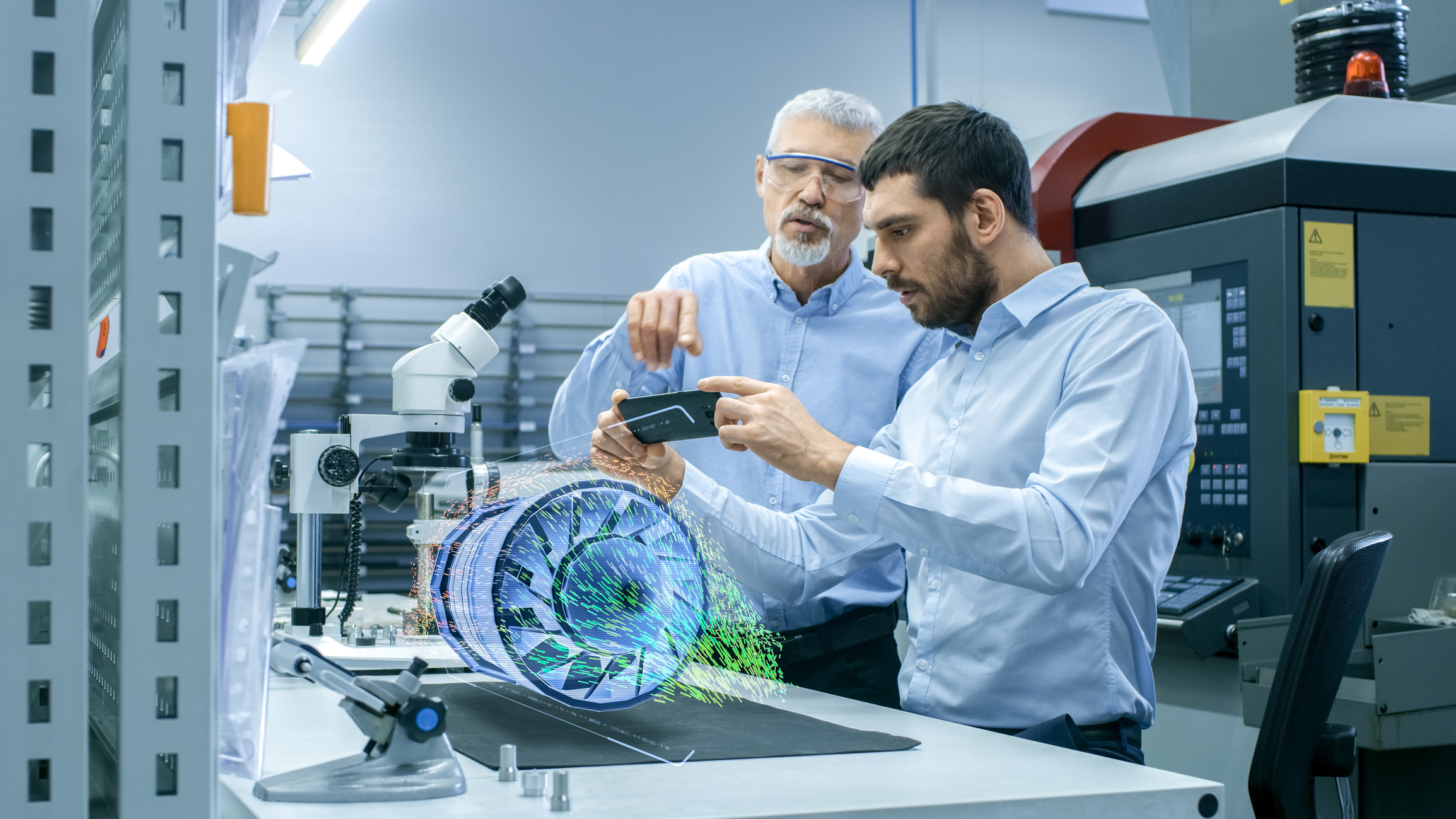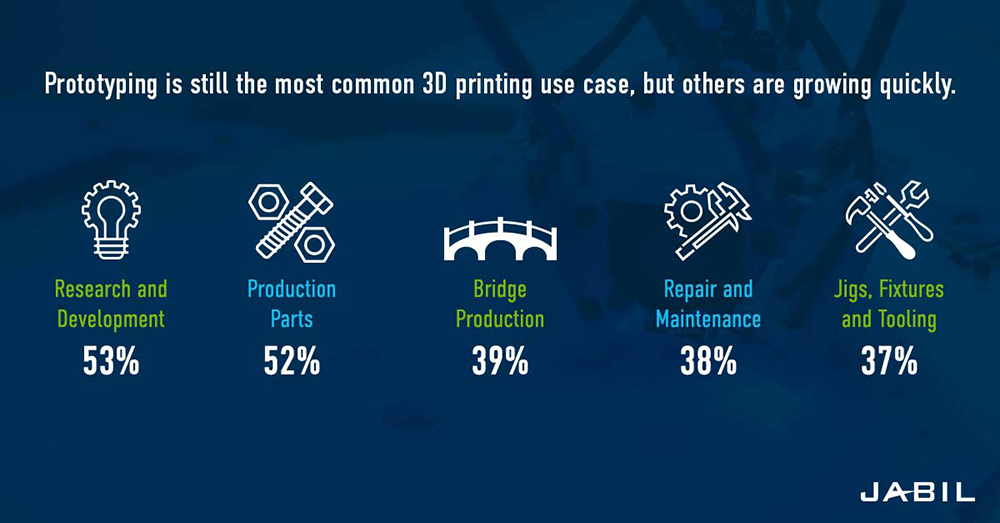
September 4, 2019
By: Gerald “JJ” Creadon, Senior Vice President of EMS Operations, Jabil
Manufacturing is undergoing a digital transformation. It is no exaggeration to state that the digital evolution is disrupting every part of the enterprise, from the back office to the supply chain. Considering the opportunities to increase efficiency, productivity and accuracy, digital transformation needs to be top of mind for manufacturers in order to stay competitive.
1. Digitization of the supply chain
To keep up with rapid innovation across manufacturing, today’s supply chains must evolve to ensure end-to-end visibility, advanced analytics and cross-functional collaboration. Trends that are driving the digital evolution of the supply chain include:
– Collapsing Product Lifecycles: The average product lifecycle is estimated to have been halved over the last decade, with an additional 50 percent shrinkage predicted by 2020 – thanks to growing practices like 3D printing.
– Outsourced Manufacturing: Electronic Manufacturing Services (EMS) is growing rapidly, with no signs of slowing down. With more original equipment manufacturers focusing on their core business, a 2016 Worldwide Electronics Market study showed the EMS industry as expected to grow to $580 billion by 2020.
– Globalization: As transportation, communications and IT systems have steadily improved, companies have increased their ability to select suppliers located anywhere in the world. According to the study cited above, by 2020, 60 percent of companies expect to be sourcing from more countries than they do currently.
2. Increasing use of AI
The ability of artificial intelligence (AI) to drive impact in delivering on-time and on-budget product is being proven daily, particularly in the fast-growing electronics goods market. For example,quality inspection techniques are being modernized with AI to meet the demands of one-off production lines. As AI’s presence in manufacturing grows, so does recognition of its role as a game-changing “must have:” a 2017 survey from the Boston Consulting Group and MIT Sloan Management Review found that 84 percent of executives expect AI to enable them to obtain or sustain a competitive advantage.
3. Augmented Reality
In its delivery of information to users while allowing them to see and interact with actual or virtual objects in unconventional ways – all overlaid onto their physical world, in front of their eyes – augmented reality (AR) conveys a myriad of benefits to the manufacturing environment. For example, AR has been shown to help accelerate lean manufacturing by reducing accident rates and lead time, while increasing productivity. Manufacturers need to step up the pace of adoption of AR; an Augmented and Virtual Reality Trends Survey shows just 29 percent of respondents stating that they had an AR/VR plan or framework at some stage of development.

4. Additive Manufacturing: A New Era
In manufacturing, 3D printing is now a part of nearly every step of the production process. Currently the purest digital manufacturing technology available, additive manufacturing doesn’t require fixturing or tooling and has near-zero switching costs in moving a file from one printer to another and from one location to the next. This is a sea change from the manufacturing process of the last two hundred years. According to a 2019 Additive Materials and 3D Printing study, practical applications have expanded substantially over the last two years, across industries including automotive, medical devices and transportation.
In spring 2019, 3GPP — a partnership of seven telecommunications standard development organizations — approved the completion of the standalone Release 15 5G specifications, giving manufacturers the information they need to create 5G devices. The primary goal of 5G is to offer three main services: an enhanced mobile broadband, ultra-low latency and massive connectivity for machines. Essentially, 5G network bandwidth will be greater than its predecessors, allowing more devices to communicate via the network at the same time. Network speeds will increase and there will be less lag time in communications.
Another 5G promise is to bring increased safety and productivity to the manufacturing industry. 5G’s low latency and greater bandwidth will support smarter factory equipment, thereby improving the performance of the technologies outlined above (AI, AR/VR) as well as machine learning, sensors for predictive maintenance and production monitoring, and much more. 5G will enable manufacturers to conduct remote operations, for example, identifying and tracking goods, inspecting situations and monitoring machine operations, in real time.
The key for manufacturers to successfully leveraging the technologies and approaches outlined above, and those on the horizon, is to develop a strategic approach to their identification and implementation. Whether this strategy is created through the creation of an internal team of experts that includes the executive bench, or through tapping an outside partner, manufacturers must embrace digital evolution in order to stay relevant and successful.

Gerald “JJ” Creadon
Gerald “JJ” Creadon currently holds the position of Senior Vice President of EMS Operations for Jabil, Inc., a global manufacturing and technology solutions provider. As an accomplished senior executive in the high-tech global manufacturing services industry, JJ has more than 20 years of experience managing Operations, Factory P&Ls, and Fortune 100 customer relationships up to $5 billion in annual revenue. In his current position, JJ is building and leading a high-performing global team of over 70,000 employees. He is keenly focused on optimizing operational performance and developing superior customer experiences by applying data science strategies across the board – wherever smart data analysis enables greater productivity, efficiency, and customer satisfaction. www.jabil.com
Scott Ellyson, CEO of East West Manufacturing, brings decades of global manufacturing and supply chain leadership to the conversation. In this episode, he shares practical insights on scaling operations, navigating complexity, and building resilient manufacturing networks in an increasingly connected world.